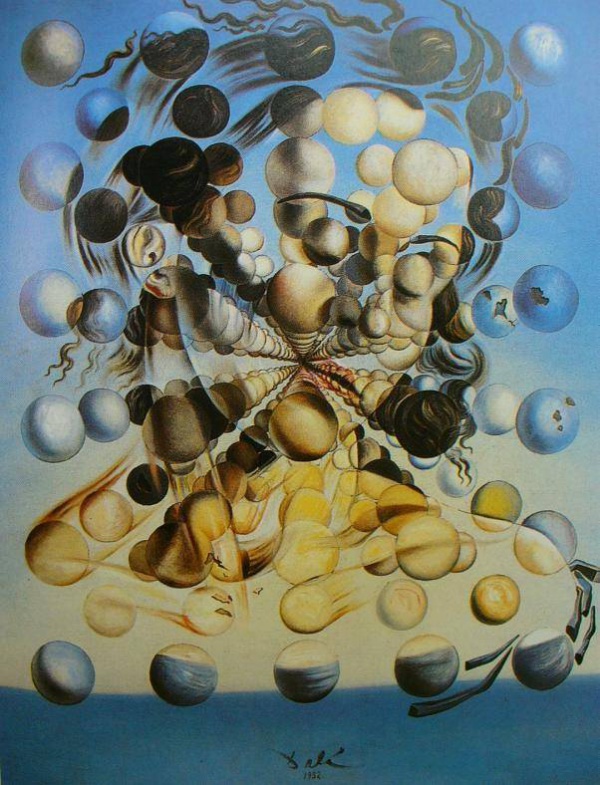Facts About Galatea of the Spheres
"Galatea of the Spheres" is a captivating painting by Salvador Dalí, created in 1952. It features his wife and muse, Gala Dalí, depicted through a mesmerizing arrangement of spheres. The title references Galatea, a sea nymph from Classical mythology renowned for her purity, and perhaps also alludes to the statue cherished by its creator, Pygmalion.
This artwork, measuring 65.0 x 54.0 cm, presents Gala's bust as a composition of spheres, symbolizing atomic particles. Dalí masterfully merges Renaissance artistry with atomic theory to illustrate the fragmented nature of matter. His fascination with nuclear physics, which was sparked by the atomic bombings of 1945, is evident in this piece. Dalí sought to convey the idea that atoms do not touch, represented by the suspended spheres in the painting.
The painting also reflects Dalí's effort to reconcile his renewed Catholic faith with the principles of nuclear physics. He designed it to be displayed on an easel in the Palace of the Winds at the Dalí Theatre and Museum in Figueres, where it remains today.
In 2009, "Galatea of the Spheres" was featured at the National Gallery of Victoria in Melbourne as part of the "Liquid Desire" exhibition, showcasing a collection of Dalí's remarkable works.

 Andorra
Andorra